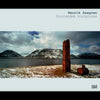Henrik Saxgren Unintended Sculptures
Pressedownload
Der Pressedownload darf nur im Zusammenhang mit einer Buchbesprechung verwendet werden. Für die Illustration einer Buchbesprechung können nur bis zu drei Bilder genutzt werden. Für andere Textformate und Nutzungszwecke (wissenschaftliche Vorträge, Werbung oder ähnliches) bitten wir Sie, vorab mit uns in Kontakt zu treten, um mögliche Fragen zu Honorarkosten, Nutzungsund Urheberrechten zu klären. Die bereitgestellten Bilddaten dürfen nicht manipuliert, beschnitten oder zweckentfremdet verwendet werden. Die Pressebilder dürfen nur mit dem vollständigen Bildtitel, dem Namen des Künstlers und/oder Urhebers sowie mit dem Hinweis auf den Hatje Cantz Verlag veröffentlicht werden. Bitte beachten Sie außerdem im Einzelfall die Reproduktionsbedingungen der VG Bild-Kunst Bonn bzw. der internationalen Verwertungsgesellschaften für Bildende Kunst.
Henrik Saxgren
The elegant S-curve of a freeway and its counterpoint, huge wind turbines on the hills behind it—Henrik Saxgren (*1953 inRanders, Denmark) searches for and finds artistic potential and creative will in the most obscure places. The title of his series Unintended Sculptures, which he has been working on since 2001, says it all: in nature and the environment, Saxgren discovers relational forms, structures, and optical illusions that seem to have been deliberately placed there by the artist’s hand. To anyone whose eyes are open, it is obvious that those greenhouse-covered fields must have been wrapped by Christo and Jean-Claude—or that these geometrical basalt-rock formations along a section of the coastline looks like an enormous sculptural vision. Saxgren’s eye, schooled in documentary photography, allows him to capture these “sculptures” at the very moment they, as Timothy Persons writes, “best define themselves in the framework of their environments.” Exhibition schedule: The National Museum of Photography, Copenhagen, September 20–December 19, 2009
»This wide horizontal book, verging on becoming oversize, is very nicely matched to Saxgren's overly-wide horizontal photographs.«
Photo-eye Magazine



